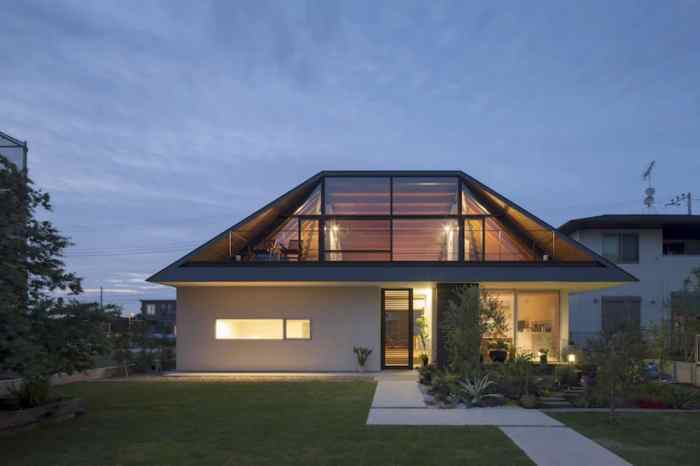House with a glass roof – Glass roofs, a captivating architectural marvel, have emerged as a beacon of modern design, seamlessly blending natural illumination with structural ingenuity. Their transparent expanse invites the outdoors in, creating a symphony of light that transforms the ambiance of any space.
From the iconic Crystal Palace to contemporary skyscrapers, glass roofs have left an indelible mark on the architectural landscape. Their ability to enhance natural lighting, reduce energy consumption, and elevate aesthetics has made them a sought-after feature in both residential and commercial buildings.
Architectural Design: House With A Glass Roof

Glass roofs have become an integral part of modern architecture, offering a unique blend of aesthetics and functionality. Architects have incorporated glass roofs into various architectural styles, each with its own distinct characteristics.
One notable example is the Crystal Palace in London, a Victorian-era structure featuring a vast glass roof that allows natural light to flood the interior. Another iconic glass-roofed building is the Pompidou Center in Paris, a postmodern masterpiece where the structural elements are exposed on the exterior, including the glass roof.
Designing glass roofs requires careful consideration of structural aspects. The weight of the glass, as well as the forces exerted by wind and snow, must be taken into account. Architects often employ steel or aluminum frames to support the glass, ensuring both strength and durability.
Types of Glass Roofs

The type of glass used in roof construction plays a crucial role in its performance and aesthetics. Here are the most common types:
- Tempered Glass:Heat-treated for increased strength and safety, it shatters into small, less-sharp fragments upon impact.
- Laminated Glass:Consists of two or more layers of glass bonded together with a plastic interlayer, providing high durability and sound insulation.
- Insulated Glass Units (IGUs):Feature two or more panes of glass separated by a vacuum or gas-filled space, offering excellent thermal insulation.
The choice of glass type depends on factors such as durability, energy efficiency, and aesthetics. For example, tempered glass is ideal for areas prone to impact, while laminated glass provides enhanced security.
Benefits of Glass Roofs, House with a glass roof

Glass roofs offer a range of benefits that enhance the overall experience of a building:
- Natural Lighting:Glass roofs allow abundant natural light to enter, reducing the need for artificial lighting and improving mood, productivity, and well-being.
- Energy Efficiency:By utilizing natural light, glass roofs reduce energy consumption for lighting and can also contribute to passive solar heating.
- Aesthetics and Curb Appeal:Glass roofs add a touch of elegance and modernity to buildings, enhancing their overall aesthetics and curb appeal.
These benefits make glass roofs a desirable choice for a variety of applications, from residential homes to commercial buildings and public spaces.
Considerations for Glass Roofs
Planning a glass roof requires careful consideration of various factors:
- Climate:The local climate influences the type of glass and structural design required. In areas with extreme temperatures or heavy snowfall, special considerations must be made.
- Orientation:The orientation of the glass roof affects the amount of sunlight and heat gain. Proper shading and ventilation strategies are essential to mitigate potential glare and overheating.
- Building Codes:Local building codes regulate the use of glass in roofs, including safety standards and energy efficiency requirements.
Addressing these considerations ensures that glass roofs are designed and installed safely and effectively.
Common Queries
Are glass roofs durable?
Yes, modern glass roofs are engineered with durable materials like tempered or laminated glass, ensuring their longevity and resistance to impact.
Can glass roofs provide privacy?
Yes, frosted or tinted glass can be used to maintain privacy while still allowing natural light to filter through.
How energy-efficient are glass roofs?
Glass roofs can be highly energy-efficient, reducing artificial lighting needs and providing natural insulation.
